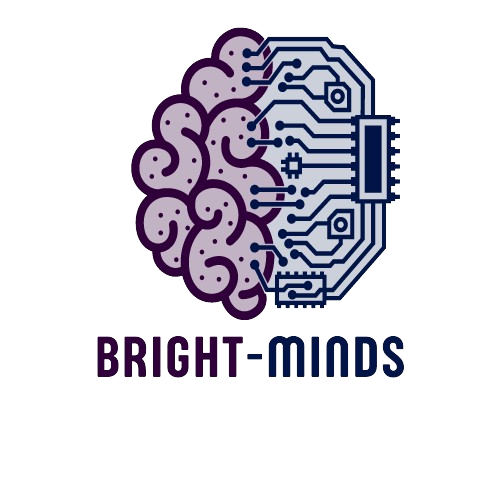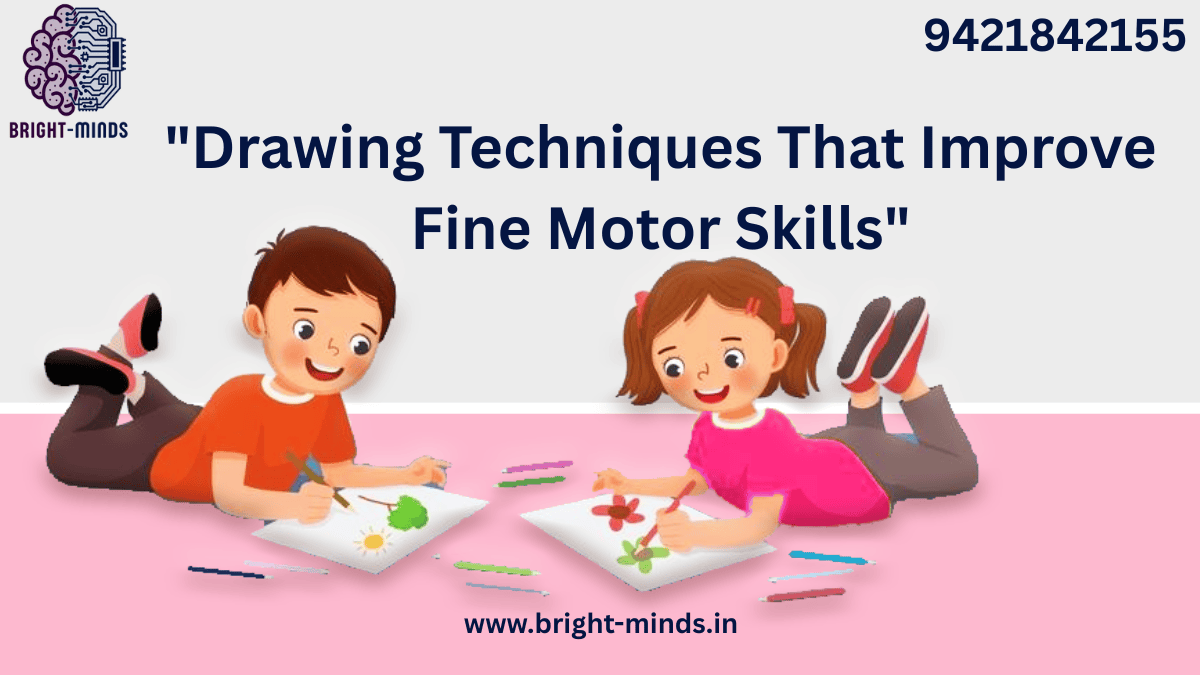If you’ve ever watched a child holding a crayon for the first time, you know how much effort goes into that tiny grip. Drawing may look like a simple pastime, but behind every stroke lies a powerful learning process — one that develops coordination, strength, and creativity.
In today’s world, where screens dominate and physical activity is often limited, fine motor skills are more important than ever. These skills — the ability to coordinate small muscle movements in the hands and fingers — form the foundation for writing, tying shoelaces, using tools, and even typing efficiently.
And here’s the exciting part: drawing is one of the most effective (and fun!) ways to strengthen fine motor skills in both children and adults.
In this blog, we’ll explore how drawing techniques enhance fine motor development, the science behind it, practical tips to get started, and how educational institutions and organizations are incorporating art-based learning into their programs.
🎨 Understanding Fine Motor Skills
Before diving into drawing, let’s understand what fine motor skills really are.
Fine motor skills involve the coordination of small muscles — particularly in the hands, fingers, and wrists — that allow us to perform precise tasks. Whether it’s buttoning a shirt, writing neatly, or crafting a delicate piece of art, these actions rely on muscle control, focus, and practice.
For children, developing fine motor skills early on is essential for academic success and self-confidence. For adults, refining these skills can enhance focus, mental agility, and even stress relief.
🖌️ How Drawing Enhances Fine Motor Skills
Drawing activates multiple brain regions simultaneously — visual, cognitive, and motor areas — creating a complete sensory experience. Let’s look at how it works:
1. Improves Hand-Eye Coordination
When a person draws, their eyes guide their hands to create shapes, lines, and patterns. This coordination strengthens the neural pathways that control movement precision — vital for handwriting and other daily tasks.
2. Strengthens Finger Muscles
Gripping a pencil or brush builds small muscle strength and endurance. Over time, this improves finger dexterity, which helps in tasks like typing, cutting, and writing.
3. Enhances Grip Control
Different drawing tools — crayons, colored pencils, markers — encourage children to adjust grip pressure. This practice refines their control and prepares them for extended writing tasks in school.
4. Promotes Focus and Patience
Drawing requires sustained attention. Completing a piece of art encourages perseverance, patience, and mindfulness — qualities that extend beyond the art table into academics and personal growth.
5. Encourages Creativity Through Structure
As learners experiment with shapes and textures, they unconsciously strengthen both their analytical and creative sides — a perfect balance of discipline and imagination.
🖍️ Effective Drawing Techniques for Fine Motor Development
Let’s explore a few fun and effective techniques that improve fine motor skills through art.
✏️ 1. Tracing and Outlining
- How it helps: Tracing shapes, letters, or pictures enhances control and precision.
- Tip: Start with simple outlines like circles or stars, then move to complex patterns.
🌀 2. Shading and Hatching
- How it helps: Varying pencil pressure develops grip strength and control.
- Tip: Encourage learners to shade gradually from light to dark using parallel lines.
🎯 3. Dot-to-Dot Drawing
- How it helps: Connecting dots improves focus, sequencing, and hand-eye coordination.
- Tip: Use creative dot designs to form animals or objects that excite young learners.
🖋️ 4. Pattern Repetition
- How it helps: Drawing repetitive shapes like spirals, zigzags, and waves builds muscle memory.
- Tip: Combine repetition with color changes to keep the exercise engaging.
🎨 5. Doodling with Purpose
- How it helps: Doodling allows free movement without rules. It improves fine control while reducing performance anxiety.
- Tip: Set a “doodle zone” during class or breaks to encourage spontaneous creativity.
✂️ 6. Coloring Within the Lines
- How it helps: Coloring fosters boundary awareness, grip control, and focus.
- Tip: Offer a variety of coloring tools — crayons for broader strokes and colored pencils for detailed work.
🧠 The Science Behind the Art
Research in developmental psychology shows that fine motor practice directly influences cognitive growth. Studies indicate that children with strong fine motor control often perform better in reading and math.
This connection exists because drawing strengthens neural circuits related to planning, problem-solving, and spatial reasoning. In adults, drawing activities can even help slow cognitive decline and improve hand agility, especially when done regularly.
Moreover, occupational therapists frequently use art-based activities to support children with developmental delays or coordination challenges — proving that art isn’t just creative; it’s therapeutic.
🏫 How Schools and Companies Are Embracing Drawing-Based Learning
Modern education systems are recognizing the importance of art integration in holistic development. Many schools now include art therapy sessions and “draw-to-learn” activities to improve focus, discipline, and self-expression.
Even corporate organizations are incorporating drawing and sketching exercises in wellness programs to help employees:
- Reduce stress and anxiety
- Improve concentration and mindfulness
- Enhance problem-solving and innovation
This growing trend reflects a market shift: creative learning and skill development programs are gaining massive popularity. According to global education reports, the creative learning market is projected to grow by over 12% annually, driven by the rise in art-integrated and sensory-based education.
✍️ Practical Drawing Exercises for All Ages
Here are some easy exercises anyone can start with:
For Children
- Finger tracing in sand or rice trays
- Drawing with sidewalk chalk outdoors
- Using stencils to create animal shapes
- Making simple comic strips
For Teens and Adults
- Sketching from observation (like fruits or objects)
- Mandala drawing for relaxation and precision
- Digital art apps for stylus control
- Life drawing sessions for focus and creativity
Each of these activities builds fine motor coordination while offering relaxation and self-expression.
💡 Tips to Get Started with Drawing Practice
- Start Small: Simple lines and patterns are more effective than complex designs initially.
- Use Variety: Switch between pencils, brushes, markers, and digital tools to strengthen different muscle groups.
- Make It Routine: Set aside 10–15 minutes daily for sketching or doodling.
- Encourage Exploration: Let learners choose subjects they love — from superheroes to flowers.
- Track Progress: Compare early drawings with new ones to visually measure improvement.
🌈 Real-Life Impact: From Art Desk to Daily Life
The benefits of improved fine motor skills go far beyond drawing. Children who engage in regular drawing activities show:
- Better handwriting
- Greater academic performance
- Enhanced confidence in creative expression
Adults, on the other hand, experience:
- Reduced stress levels
- Better focus at work
- Improved hand control in daily tasks like typing or cooking
In other words, drawing builds more than art — it builds ability.
💬 The Bigger Picture: Creativity Meets Skill
In an age dominated by digital devices, activities like drawing reconnect us with hands-on learning and mindfulness. By combining skill and creativity, we can help both children and adults grow into more balanced, expressive, and capable individuals.
At Bright Minds Learning Center, we believe that art is not a luxury — it’s a language of growth. Our art and fine motor skill programs are designed to nurture creativity, focus, and lifelong learning habits.
Best Home Tuition Posters for Tuition Classes in Kharadi
home tuition in punehome tuition posters for tuition classesonline tuition classespamphlet for tuition classesteachmint tuition apptuition classestuition classes near metuition classes postertuition classes poster ideas

